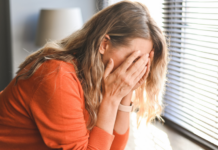 I am a scientist, so I like data. And throughout the COVID pandemic, I keep asking the same question – How are the numbers today?
I am a scientist, so I like data. And throughout the COVID pandemic, I keep asking the same question – How are the numbers today?
I have asked that question and a few others nearly every day (or night) since the first COVID-19 case in the U.S. was confirmed back on January 20, 2020.
These past few years have been crazy and filled with adjustments and upheaval. On the upside, many companies gave employees Zoom accounts and abandoned policies that didn’t allow work from home. Also, many families found it a time to reconnect and enjoy extra time together.
On the downside, our kids’ schools were closed, and they were forced to transition to distance learning abruptly. Those decisions were followed by hybrid schedules, which were a nightmare to manage. Eventually, kids were allowed back into school, but with different rules. There were plastic dividers, masks, and lessons on handwashing. Kids were cohorted and kept from playing with their friends on the playground. And many childcare options that helped working parents manage their schedules vaporized.
In the last two years, we have hoarded toilet paper, hand sanitizer, and PPE (personal protective equipment). We have had drive-by birthday parties, COVID Christmases, and we socialize outside more than ever. Our lives have been adjusted again and again. And we are still grappling with the ongoing stresses of life not being normal yet.
We started without any understanding of the science of this virus, and doctors did not know the best treatments for this illness. But over these two years, doctors have shared their knowledge with others. Treatments have undergone clinical trials so physicians and scientists could establish what works. And now there are even multiple approved vaccines against COVID that are plentifully available for anyone in the U.S. that wants one.
And the question now is, are we safe enough? Can we leave our pandemic worries behind and start returning to normal? Since we can never live in a world without risk, have we reached a point where the risk is low enough that we can breathe easier and return to normal?
Throughout the pandemic, I have kept a journal with daily data for my town, county, state, and the U.S. (honestly, it is a spreadsheet and a few graphs of the data) to help me consider our family’s COVID risk. Various numbers have risen and fallen in these past two years, and honestly, my level of dread has risen and fallen with each new wave from each new variant. I have had my moments of panic, but mostly I have found solace in the numbers. And based upon different numbers at different points in the pandemic, my assessment of the risk for myself and my family catching COVID and falling ill or dying has changed.
Early in 2020, due to the scarcity of testing options, the most important numbers were positivity rates and infection rates – the higher the positivity rates, the more likely we were undercounting the number of people infected and the more likely COVID was spreading in our community. A year later, at the beginning of 2021, with the advent of multiple vaccines, we were looking at vaccination rates and hoping that enough shots in arms would mean a faster end to this pandemic.
And here we are in early 2022 when most Americans have been vaccinated (with numbers even higher in Connecticut), yet we are amidst another surge from another new variant. At this point, I have stopped worrying about either positivity rates or infection numbers. I know positivity rates are incorrect because access to at-home COVID tests is likely to be underestimated again. Let’s face it, people aren’t reporting all the cases they detect at home, and that means that the infection data is wrong. At the same time, infection numbers today aren’t such a worrying statistic because the Omicron variant causes less severe disease, and there are multiple effective treatments. Today COVID infection numbers aren’t a symbol that is as dire as earlier in the pandemic.
At this moment, I am reassured that the hospitalization rates are dropping (remember, it is a trailing indicator, so we see changes in this number a week or two after we see the changes in the number of cases). Also, when we examine the ratio of infection rates to deaths, it is obvious that we are all so much safer now than we were in early 2020 because a much smaller fraction of people who become infected are dying today than ever before in the pandemic.
Right now, vaccinated people have nearly the same likelihood that they will die in a car crash (12/100,000 chance) as they will die from COVID (15/100,000 chance), and very few of us worry about dying every time we get into a car. Children’s risk of death is even lower (especially if they are vaccinated). At this point, most of the risk is amongst the elderly, immunocompromised, or people with secondary health issues. I don’t say this to imply I don’t care about these people. I am one of those people because I am overweight and have secondary health issues as a cancer survivor. I am saying this to reassure everyone who is young and healthy that you can start letting some of those daily pandemic worries go.
Our family is vaccinated and boosted, where eligible. Now I have reached the point where I hope that our children’s schools will return to normal by next fall (even if that means a few more booster shots). I am also hoping that I will have a choice about wearing a mask in my own classroom. I hope that between vaccinations and infections with the Omicron variant, there will be a lot of immunity in our community, and we can start returning to normal. I will still be cautious because of my health issues, but I am ready for our children to have their childhood back.
And most of all, unless some new super-lethal variant comes along, I will tell myself to take deep breaths and do what I can to not worry about COVID anymore.
During this crisis, I have been reading articles galore to help educate myself about this pandemic to answer questions and talk friends off the cliff of terror. I want to use my science skills to help serve as a sounding board so others can think about the real risks of their various choices. I have worked for years to engage the public, teach science to young campers, and coach my students to be translators of science for their families and friends. And I hope that people will keep asking me questions (about COVID, how the vaccines work, how GMOs work, or just any science question they might have) so that I can translate the science of the moment for my non-scientist friends.
I know that I won’t walk around without any worries (and I will still be wearing a mask most of the time). And I also know that I will still lose sleep some nights as we keep moving through this pandemic. But at the same time, I want our kids to have a little bit more of almost-normal. I do all I can to help them stay safe and come home to us healthy each night. And because I worry about their mental health (and my own), I will try to let the pandemic stress go. I will remind myself that at this moment in time, the risks to their health are now higher due to them playing soccer and doing gymnastics than they are from COVID.

























